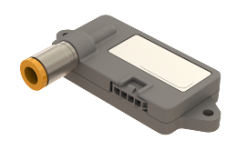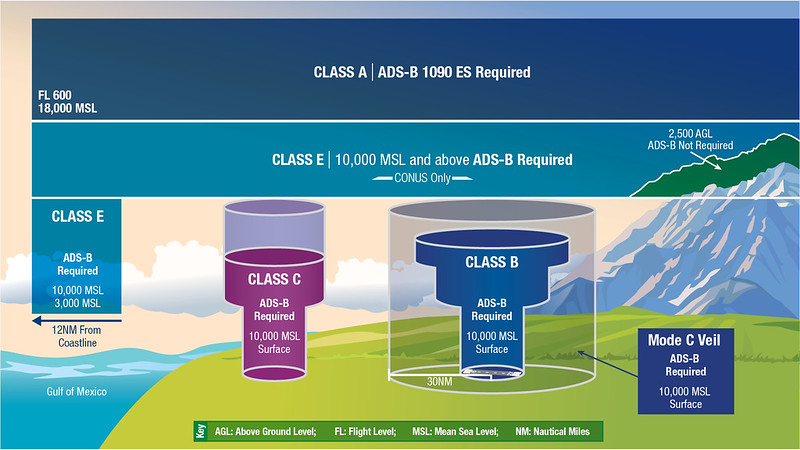Cth6
Well Known Member
Email just came out about an issue with the EchoUAT requiring an encoder to be added. More info at https://uavionix.com/echouat-update
So,, this means any ECHO UAT that receives a "sniff " from the GTX 327 antenna for pressure altitude is now not good enough for experimental ADSB out? Looks like the encoder Av is providing is also an pressure altitude encoder??
Maybe I read it wrong?
So,, this means any ECHO UAT that receives a "sniff " from the GTX 327 antenna for pressure altitude is now not good enough for experimental ADSB out? Looks like the encoder Av is providing is also an pressure altitude encoder??
Maybe I read it wrong?
I read this ....
as. When not being interrogated for Mode C (Pressure Alt), the transponder is only sharing Mode A (Squawk). I am guessing that the Echo doesn't respond correctly when Mode C stops.
Just a guess.....

That is what I am guessing too. The dedicated encoder will allow the Echo to transmit altitude information even when outside of radar coverage (when not sniffing it from the transponder). I wish they provided a more detailed reasoning for this.
Last I read, ADSB out was not required except in Class B and C and inside Mode C rings.

I sent an email to support saying there was a LARGE NUMBER of confused pilots with their brief posting. We do NOT need to be guessing but, with the very limited amount of information we have been given, that is what is happening. We shall see what reply they give. I would imagine their server is pretty HOT right now!
Hmm. I have an echoUAT in my RV-3 and didn’t receive any notice. It’ll be interesting to see if this closes the coverage gap I consistently see between approximately Grand Lake, CO to Steamboat Springs, CO. My Flight Aware data consistently drops off in this gap area whether I’m at 12,500’MSL or 16,500’MSL.
Please pardon the correction...Maybe the FAA is planning for the future. Billing us for the use of THEIR airspace.
Seems that I remember uAvionics offering a MUX wire harness at one time that actually integrated an altitude RS232 signal into the Echo along with one of the existing RS232 channels. That was offered to minimize a change over from the Navworks device which has altitude input. I see that still offered on the uA site, wonder how this new SB may address those who have added that altitude signal in that way.
My understanding is that UAT must use same altitude source as mode c xponder. How does this additional encoder meet this requirement?
Email just came out about an issue with the EchoUAT requiring an encoder to be added. More info at https://uavionix.com/echouat-update
Interesting problem. My EchoUAT gets it's encoder information directly from my GRT EFIS. That source is shared with the encoder. So I'm assuming this notice doesn't apply to me.
Seems that I remember uAvionics offering a MUX wire harness at one time that actually integrated an altitude RS232 signal into the Echo along with one of the existing RS232 channels. That was offered to minimize a change over from the Navworks device which has altitude input. I see that still offered on the uA site, wonder how this new SB may address those who have added that altitude signal in that way.
I read this ....
This most frequently happens in fringe or non-existent radar coverage, where the Mode C reply is not available.
as. When not being interrogated for Mode C (Pressure Alt), the transponder is only sharing Mode A (Squawk). I am guessing that the Echo doesn't respond correctly when Mode C stops.
Just a guess.....
Does that mean they too will need an independent alt encoder?
Per the uAvionix data sheet, the skyBeacon already contains a "static pressure sensor and encoder".
https://uavionix.com/downloads/skybeacon/skyBeacon-TSO-Data-Sheet.pdf
The SkyBeacon and TailBeacon have integral baro encoders. The Echo does not.But isn't that same method used in the wingtip and tail UAT's? Does that mean they too will need an independent alt encoder?
The uAvionics transcoder, aka "sniffer", system has a couple of limiting drawbacks. One being that without a direct connection to the transponder, baro (pressure altitude) cannot be derived without a transponder reply. The transponder will not emit a reply, Mode A or Mode C, unless interrogated by a secondary RADAR or an active TCAS system. The MOPS for ADS-B Out requires, as Walt said, baro alt from the same source as the transponder, and two of the required data elements of an ADS-B transmission are squawk and pressure altitude. So, the ADS-B unit will transmit once per second (1hz), unless required data elements are missing...
But, wait, ARSR (enroute center RADAR), takes about 14 seconds to make a sweep, so how does that add up? The MOPS allows a 'lookback' of up to 90 seconds (IIRC) on the squawk code (Mode A) sent by the transponder. But, that doesn't solve the baro problem. Apparently, uAvionix, along with a couple of other manufacturers, got an exception to use an alternate baro source to act as a backup for the transponder Mode C. The backup source is considered the same as the transponder Mode C because the ADS-B unit constantly compares the two sources (along with a GPS altitude comparative algorithym)
A note about ADS-B airspace: The ADS-B required airspace areas become academic as soon as the ADS-B is installed, because part 91.225 (f) requires the ADS-B system to be operated "in the transmit mode at all times"
Is this what you are thinking?
I can't figure out how to get to the 'deeper level' of the app to adjust the transponder threshold like I could before. Can someone tell me how this is accomplished in the new app?
The link and instructions on the website appears to show the 'old' app. And it never did explain how to get to the transponder threshold adjustment page.
Either my email was very convincing and/or others voiced a similar idea. I just recieved and email from Shane at uAvionix that said:
Hi Roy, We just added the standalone tailBeaconX Trade Up options. You'd receive $750 for your echoUAT and get to keep it as an ADS-B In unit as well. Please revisit the online form and now you can select the standalone tailBeaconX option.
https://uavionix.com/echouat-update/
I received a quick reply from uAvionics: The encoder is the size of a matchbook. You unplug the connector from the echo and plug it into the encoder, then plug the encoder into the echo (daisy chain) No wiring necessary.
Hmmmm.....then why is a wiring harness included.....?
There was no mention of what the pitot tube receptacle-appearing area on the picture might be for. I sent another email asking that. My unit is behind the baggage compartment to get it close to the antennae and to have it out of the way. If I have to run a pitot tube back there it will be a major PITA.....
I only fly VFR, so not to concerned about absolute number for altitude that the Trio actually holds, just bump it up or down to get the results I want on Dynon. I guess I could set both to 29.92 and see what the pressure altitude is on the Dynon ie GTX 327 and compare to indicated at 29.92 on the Trio. Never done that.. I think that may indicate the altitude error or diffence in static pressure source. Might be a good test to run in stable air.I guess I should test it myself, but for those of you with an alternate (cabin air) static source switch, what kind of altitude change do you see when changing to cabin as as static source? 10's of feet? 100's of feet?
Finn
Last I read, ADSB out was not required except in Class B and C and inside Mode C rings. ATC radar coverage is solid inside those, altitude should be available every time the radar pings. Why now the concern for outside those but still in ATC radar coverage. That's a lot of coverage area that is now on the table.
There was no mention of what the pitot tube receptacle-appearing area on the picture might be for. I sent another email asking that. My unit is behind the baggage compartment to get it close to the antennae and to have it out of the way. If I have to run a pitot tube back there it will be a major PITA.....
What's all this about pitot connections? Second post you have referred to it. Altitude encoders use static pressure only and airspeed indicators are the only instruments that use pitot. So if your Echo is in the baggage area it is actually closer to the staitic source than if the unit was under the instrument panel. A simple inline tee should do it. No pitot system involved.
RV6, Open Cabin Alt static valve, indicates more than 50 but less than 100 feet lower, at cruise. Pitot static IFR to FL180.
